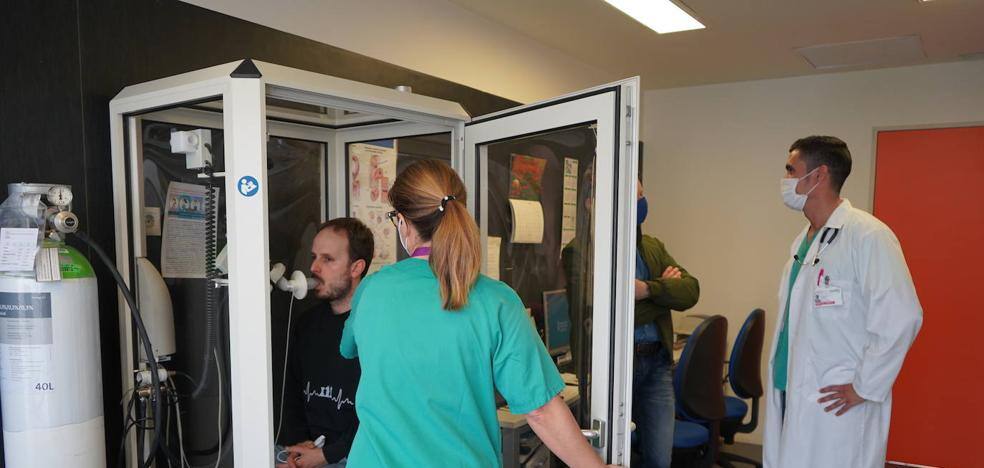A man performing lung capacity tests with which the presence of microplastics has been correlated. /
The study, which has been carried out in collaboration with the General Hospital of Elche and the Autonomous University of Madrid, relates the presence of these microfibers with worse lung function and pathogenic germs
Microplastics inside the bronchi. This has been the finding of an investigation carried out at the General University Hospital of Elche, in collaboration with the Polytechnic University of Cartagena and the Autonomous University of Madrid.
These small plastics and fibers of less than five millimeters were found in two out of three bronchoalveolar lavages performed on Pneumology patients, but their results can be extrapolated to the general public. “We are all exposed to the inhalation of microplastics,” concludes Dr. Carlos Baeza Martínez, from the Pneumology Service of the General University Hospital of Elche, who has led the study.
“Air pollution by microplastics is not as well studied as soil or water pollution, although it is a more serious problem than we imagine. Everywhere we look there is plastic. Small fibers are released from the clothes we wear that we can end up inhaling”, warns Professor Javier Bayo, from the Department of Chemical and Environmental Engineering of the UPCT, where the chemical analyzes of the samples have been carried out, in collaboration with laboratories of the Autonomous University of Madrid.
The research has been financed by the Pneumology Foundation of the Valencian Community and by the Foundation for the Promotion of Health and Biomedical Research of the Valencian Community (FISABIO). The results of the study were presented at the 55th Congress of the Spanish Society of Pulmonology and Thoracic Surgery (SEPAR), held in June in Pamplona, where it received one of the SEPARpatients 2022 awards. In addition, the research has been published in the Journal of Hazardous Materials , one of the most important international journals in the field of pollution and its risks to humans.
More microplastics in women
The results of the study show that individuals who have more microplastics in their respiratory system have more pathogenic bacterial growths. “It seems that microplastics could favor the growth of pathogenic germs or facilitate their transport through the air,” comments Dr. Baeza. The greater presence of plastics and fibers in the bronchi was also found among those who had more abnormalities in the radiological tests, a higher rate of obstruction of their bronchi, and worse respiratory function.
The findings of these microplastics inside the bronchi have been more frequent in women, in people over 60 years of age, in active smokers and in people who have been exposed to higher risk environments, such as workers in sectors such as construction, carpentry , shoe manufacturing or electronics.
Regarding the microplastics and microfibers detected, almost half were rayon-viscose, followed in frequency by the finding of polyester, cellulose, and cotton.
How to prevent
From the Polytechnic University of Cartagena they recommend avoiding single-use plastics as much as possible, adequately ventilate interior spaces, use respiratory protection systems in dusty environments or where cutting work is carried out and not smoking are the preventive measures they recommend the authors of the study to reduce the inhalation of microplastics, as well as promote the reduction of road traffic in cities, since the wear of vehicle tires generates many of the microplastics present in urban air.
#UPCT #researchers #find #microplastics #respiratory #tract







